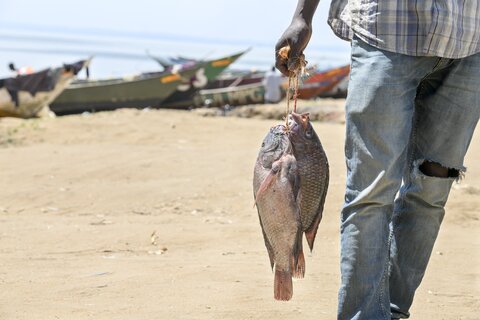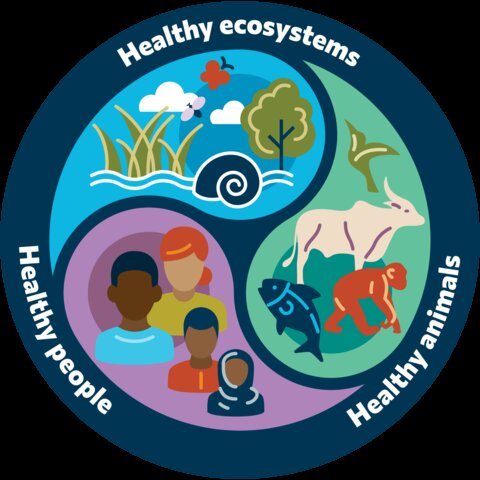Preventing pandemics through everyday health systems

Covid-19 was not a one-off. The incidence of infectious disease outbreaks with epidemic potential is increasing as factors like globalisation, deforestation, land use and climate change, impact the interactions between humans and animals in their shared environment.
These drivers of emerging infections frequently cross over with the drivers for endemic and neglected tropical diseases, with the responses to these new diseases also implemented in the same health systems that have been established for everyday health needs.
This month, Japan hosts the G7 in Hiroshima and will follow up on the 2021 G7 Pact for Pandemic Readiness. This pact outlines the need for a One Health approach to pandemic preparedness, with timely access to surveillance data from multiple sectors and sources. It also recognises that this needs to be alongside well-trained staff who can raise alarm bells early and followed by a well-equipped and fully trained health workforce who are able to respond rapidly.
Strengthening everyday health systems so that they are ready for that rainy day
There is, understandably, a great deal of conversation about pandemic-specific measures and policies to stop the next outbreak before it becomes a global problem. But investing in responses to exceptional events will risk becoming unsustainable as public interest and funding fades. This was a common complaint from interviewed experts for a report back in 2021, where they recalled a surge of interest in a new disease at the time of outbreak but, investments in new laboratory equipment or services were then rarely used after the outbreak had waned.
If, instead of pandemic-specific measures, we can focus on strengthening everyday health systems, this could increase society’s resilience to new diseases and these everyday health systems are then in-place to be deployed in the face of an outbreak. For example, actions and interventions focusing on the control, prevention, and elimination of neglected tropical diseases (NTDs) are often delivered in populations that are also at high risk of emerging infections. Thereby, developing a competent health workforce and comprehensive health infrastructure which can be readily deployed in the face of exceptional events.
What does the price of fish have to do with Ebola?

The other reality that is acknowledged in the G7 Pact is that people don’t live their lives in neat siloes according to human, animal, and environmental health. In fact, most of us live complex lives that interact with animals and plants in a shared environment nearly every day. We need an approach that reflects this ‘One Health’ reality.
There are a variety of reasons why pandemics emerge and often it is just one outcome from many ‘upstream’ factors that increase the likelihood of new emergence events, with risks often existing outside of just the human health sector.
Let’s consider the Ebola outbreak in West Africa back in 2015 - what has the price of fish to do with it? Seemingly not a lot, as there isn’t a direct transmission risk to people from fish or seafood. But in 2013, changes made in Brussels to the Common Fisheries Policy arguably contributed to the largest outbreak of Ebola in history, some 5000 miles away in Guinea, Liberia and Sierra Leone.
The Sustainable Fishing Partnership allowed EU fishing rights in other countries including around West Africa. This, in conjunction with illegal fishing, depleted fish stocks and endangered marine ecosystems, led to the reduction of fish available for local coastal communities who rely on fish as their primary source of protein. The community therefore looked elsewhere for their protein and livelihoods, turning to the jungle and the hunting of bushmeat, which brought communities into closer contact with wild animal species that were potential vectors of Ebola virus.
However, there could also have been factors such as deforestation and climate change driving the risk of emergence. For example, erratic weather or deforestation reduces the food sources offered by the forest, leading humans and animals to compete for fewer resources and coming into closer contact, increasing the risk of disease emergence or re-emergence events.
Taking a One Health approach to strengthen everyday health systems

As the NNN One Health Cross-Cutting Group, we believe combining this One Health lens and the investment in overall health systems strengthening is an easy win for the pandemic prevention agenda. It can help to deliver on existing health targets across multiple sectors, such as on controlling NTDs or improving livelihoods with enhanced livestock productivity and at the same time, improving global health security.
Disease outbreaks start small, so this One Health approach needs to go across all sectors and scales. As the NNN One Health Cross-Cutting Group, we know that community needs to be at the centre of sustainable NTD control. This means we need strong community-level health services across humans, animals and the environment to build resilient populations who are less vulnerable to emerging pathogens, and systems that allow for early detection, ideally to prevent the outbreak before it reaches the human population.
Implementing One Health to deliver on the G7 Pact
It is important we commit to implement the commitment to One Health that the G7 Pact for Pandemic Readiness calls for; all the way from overarching global policies like the Pandemic Instrument, down to the community health level, so that we better reflect the daily lives that people are already living. Taking this holistic approach can also reveal some additional rewards. For example, in Chad where, combining livestock vaccination and veterinary care with a childhood vaccination campaign, actually improved vaccination uptake and coverage for hard-to-reach children from nomadic pastoralist communities and reduced costs by 15%.
To deliver this G7 commitment, we need to create an enabling environment of supporting institutions and governance. For instance, taking a more holistic, systems-based approach requires an evaluation framework or impact measure that properly recognises the benefits of pandemic prevention over just a good response, or where we can justify costs which might occur in the animal or environment sectors for benefits that are felt in the human health sector. However, as complicated as it may sound, and despite the need for some hard work to change existing systems, it’s important that we are not deterred. We can start preparing the health workforce, agreeing responsibilities across sectors, and encouraging everyone to start working with others wherever possible.
If you would like further inspiration on how to use a One Health approach for NTDs, the NNN’s One Health Cross-Cutting Group helped to produce the World Health Organization’s One Health companion document to the NTD Roadmap 2021-2030.